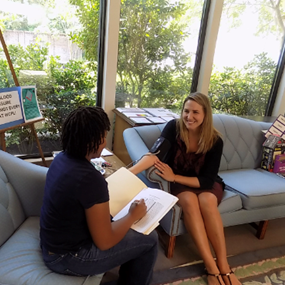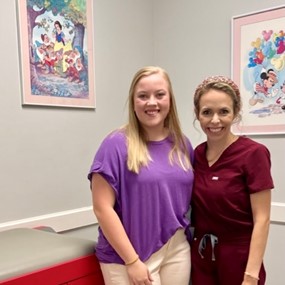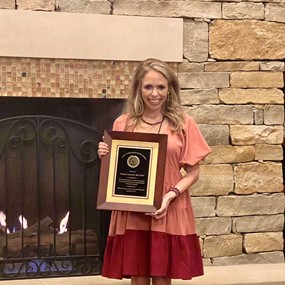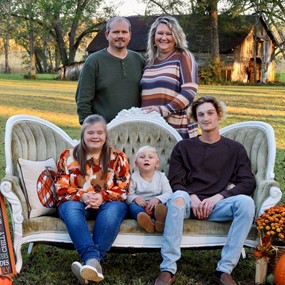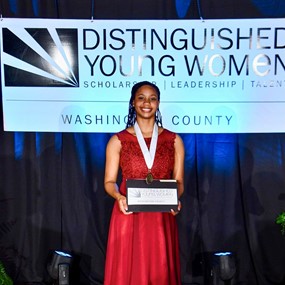Education program focuses on Native American history, culture
The first thing I noticed on a visit to McIntosh Elementary was the striking poster of a Native American outside the classroom. For some reason, the poster captivated me. Looking back on it now, it seemed to greet me, and its presence foreshadowed the topic of conversation.
After taking several seconds to look at the poster, Samantha Williams, coordinator of the Indian Education program in Washington County, lead me into the classroom decorated in an array of colors. Shelves of books and videos, all about Native Americans, as well as display of traditional and fancy clothing made this classroom different.
On the walls were pictures of numbers and animals translated into another language. Dream catchers, unlike any I have ever seen, adorned the walls. Not too far from them, hung objects made of feathers, thread, ribbon and leather.
As I continued to take in the room, Williams sat down to give me a lesson in Native American culture and history. The classroom we occupied is known as the Indian Education Class. Indian Education serves all Native Americans in Washington County.
The program was started by Bennett Weaver, with help from Gallasneed Weaver. Then it was handed over to Laretta Weaver and finally to Williams 17 years ago.
Williams role in Indian Education is to be “a liaison for all Native American kids.” She is also a source of information for students who are not Native American but who are interested in Native American culture.
It is a role she serves well based on what I learned on my visit. I learned that the clothing described earlier is called regalia. I first assumed them to be called costumes. However, Williams explained, “Costumes make you something that you’re not. We’re Native American whether we have our regalia on or whether we don’t.”
In this room, students can learn about the regalia, beading, basic Choctaw language, such as that which was written on the walls to identify the numbers and animals, Native American sign language, chanting, drumming and more. “We teach them basically everything that involves the culture,” she said.
Williams’ role is not limited to the elementary school. She goes to all the schools in the county to help junior and seniors. Plus, there is an afterschool program every Tuesday and Thursday in which Native American students can learn about their culture and keep it alive.
The Indian Education program is also used to prepare students for pow-wows, which are ceremonies that take place on the Reservation, located at 1080 Red Fox Road in Mount Vernon, Alabama.
Williams estimates that more than 600 children, from kindergarten to 12th grade, are impacted by the program. About 50 of these children are involved in the pow-wows that take place at McIntosh Elementary and on the Reservation. They learn pow-wow etiquette and prepare for things such as competitive dancing.
They have different types of regalia to wear during the pow-wow. Some she labeled traditional; others, fancy. Williams added that children could even do their own bead work for their regalia.
During our visit, she showed me different types of regalia girls and boys wear. I learned that the objects made of feathers, thread, ribbon and leather were called bustle and are a type of regalia worn during pow-wows.
Pow-wows are special as they start with a blessing from the elders, followed by Gourd dancing. Together Native Americans feast, sing and dance. Washington County has an annual pow-wow that typically takes place at the Reservation on the first Friday and Saturday of October.
Native American Heritage Month kicks off with a Culture Festival on the first Friday of November. Williams said the fall events are “open to all who want to come and learn.”
As I listened to Williams talk about these community events and the Indian Education program, I continued to look around the room in wonder. I was shocked that this was my first-time hearing of such a program.
She explained that the program falls under Title VI Indian Education and is funded through competitive grants. As McIntosh and surrounding communities, such as Topton, Sims Chapel, Fairford, Calvert and other local areas, have the largest Native American population in Washington County, it makes sense that the program’s main location would be McIntosh Elementary.
The Native Americans in this area are all Choctaw. This includes Williams, who was in the Indian Education program as a child.
Before integration, schools in Washington County were segregated according to blacks, whites, and Native Americans. The school Native Americans attended was called Reed’s Chapel Elementary. Reed’s Chapel is where the Indian Education program began in the county. Williams got to experience the program while there and at McIntosh Elementary when Reed’s Chapel closed.
By this time, I began to realize how much I didn’t learn in my own history classes, especially as it relates to Native Americans. Before now, the possibility that Native Americans had segregated schools never crossed my mind. Maybe it was growing up in Birmingham, but my understanding of segregation had always been black and white.
Williams explained that many Native Americans remain in the area because their ancestors hid when the Trail of Tears happened. When the census came through, they believed that all the Native Americans had been moved to Oklahoma. This led them to only look to see who was black and who was white.
The Indian Education program, at both Reed’s Chapel and McIntosh Elementary, became a special place for Native American kids. Williams can recall this program giving her “a sense of pride” growing up.
She explained some of the prejudices Native Americans face, including those surrounding interracial dating and marriages. Williams is married to Nick Williams, who is white, and they have a daughter, Adrianna Williams. When Williams was growing up, interracial relationships like these were not welcome.
We continued to talk about prejudices of today. Though some people try to ignore it, race relations remain an issue in this day and time.
When William’s students talk about history or racial tensions during Native American Heritage Month and Black History Month, she tells them to “just be proud of who you are.”
She said the Indian Education program is so significant to Native American children because it not only teaches them their heritage and culture, but it helps them develop the pride that Williams felt growing up.
Based on my experience, the Indian Education program is also important for students who are not Native American. In this one visit, I learned valuable things that I will cherish forever.
As a parting gift, Williams gave me a beaded lanyard. It meant so much to me that I hung it on my wall at home where all other my other treasures are kept. Whenever I look at it, I am reminded of our conversation and inspired to learn more about Native Americans.
Tags: Chatom
